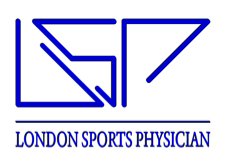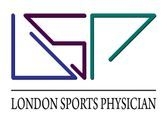Trigger Point Injections
TRIGGER POINT INJECTIONS:
Patient Information Leaflet
Myofascial trigger point injections for the treatment of pain
This information sheet is designed to provide you with information relating to trigger point injections. It also addresses some of the common questions that people ask about the procedure.
A/ What is a trigger point injection?
A trigger point is a tender area of your body, often within a muscle, which when pressed causes pain. It is sometimes referred to as a myofascial trigger point (MTrP).
Muscles are made to contract and relax. For various reasons, muscles may fail to relax and a knot or tight band of muscle (trigger point/s) is formed which can then become very painful and sensitive.
It is common for several trigger point injections to be made to the affected area on a single occasion to give the best chance of pain relief.
These injections will contain local anaesthetic, often with a small amount of corticosteroid (cortisone). They can be carried out for therapeutic (pain relief) and/ or diagnostic (to prove a certain area is indeed the suspected cause of pain) reasons.
The injections are often undertaken in areas such as the shoulder and hip girdles, neck or back. Sometimes a series of trigger point injections may be advocated.
B/ Is this the right treatment for me?
Other treatment options will be discussed with you before deciding to go ahead with the injections and your consent will be needed. The decision on whether or not to go ahead with the injection is a shared decision between you and your doctor.
It is important to recognise that these injections are not a cure for the condition, but can be very useful for reducing the pain intensity and sensitivity that patients often find highly debilitating. It gives the best results if utilised alongside rehabilitation treatments such as physiotherapy or osteopathy.
C/ Additional precautions:
Safety is paramount. If you have an infection in your body or on the skin, your doctor will postpone the treatment until the infection has cleared.
If you have started anticoagulant or antiplatelet medicines that thin the blood such as warfarin, rivaroxaban, heparin or clopidogrel, this may require extra preparation.
If you take anti-retroviral medicines, be aware that these can interact with the corticosteroids used in the injections.
If you suffer from diabetes, the use of corticosteroids during injections may cause your blood sugar to change, requiring monitoring and adjustment of your diabetic medication.
If you have any allergies to medications or metal, please let your doctor know.
You must also inform the doctor if there is any chance that you could be pregnant.
If you are planning to fly or travel abroad soon after the injections, please let your doctor know as it may be best to change the date of the injections.
D/ What will happen to me during and after treatment?
Before the injections, your doctor will discuss the procedure with you. Your doctor will either obtain your consent before the injections or confirm this consent if it was previously given.
The doctor will direct the injections to the area suspected to be a source of pain.
The trigger point injections are similar to acupuncture dry needling. You may feel a stinging sensation as local anaesthetic is injected to numb the skin and surrounding tissues.
When the injections are made, you may also feel pressure, tightness or a pushing sensation. If there is excessive discomfort, please let the doctor know.
After the injections, you will be checked to ensure you are well. You will then be advised when to get dressed and be given assistance to help ensure you can stand safely after the procedure. You will be given further advice when you are ready to go home.
It is unsafe for you to drive home immediately after the procedure. If you do so, please be aware your motor insurance may be invalid.
E/ What can I do after my procedure?
Ideally you should arrange for someone to stay with you for 24 hours but failing that, you should at least have access to a telephone and have someone check on you in the first day or two.
You should not drive, operate machinery, sign legal documents, provide childcare unsupervised or drink alcohol until fit to do so.
If in doubt, please discuss these issues with your doctor for further advice.
F/ When can I return to work after the procedure?
This will vary between individuals and may depend on the nature of your work.
Often within a day or two is fine for most people.
G/ Will I experience any side effects?
As with any procedure, side effects may occur. However, these are usually minor and there is little risk of serious harm.
Side effects may include:
Mild local tenderness and/or bruising at the site of the injection, that usually settles over the first few days.
Infection. This is rare and occurs in 1/5,000 to 1/ 20,000 injections. You should seek medical help if there is local warmth or redness over the site of injection with tenderness and/or you feel hot and unwell. This may require antibiotic treatment.
Skin discolouration (a potential risk of injections close to the skin, but rare and more commonly seen in darker skin).
Lack of success. Injection treatments are not always effective and may not help your pain.
H/ What can I expect in the days afterwards?
You may experience some soreness or aching at the injection sites.
Please keep the areas dry for 12-24 hours following the procedure.
Do not worry if your pain feels worse for a few days as this sometimes happens. Take your regular painkillers and medications as normal and this should settle down.
Try to keep active (e.g. usual activities of daily living) while avoiding anything too strenuous.
I/ What should I do in the weeks after the injections?
As your pain decreases, you should try to gently increase your exercise.
Simple activities like a daily walk, use of an exercise bike or swimming, will help to improve your muscle tone.
It is best to increase your activities gradually.
J/ Is there anything else I need to consider before the procedure?
Continue to take your medication as usual on the treatment day (unless you are taking blood thinning medications such as warfarin, rivaroxaban, heparin, or clopidogrel).
If you take a blood thinning medications, or are unsure if you do, please contact your doctor at least two weeks before your injection to help us manage these.
*It is important to have something substantial to eat and drink an hour or so BEFORE having these injections- this is to minimise the likelihood of feeling ‘lightheaded’ or fainting after an injection.
ACKNOWLEDGEMENTS & THANKS
This patient leaflet has been partially informed by the ‘Trigger point injections for the treatment of pain’ leaflet produced by the Faculty of Pain Medicine of the Royal College of Anaesthetists (with contributions from the Addenbrookes Pain Management Unit, Chronic Pain Service at St George’s Hospital London, Newcastle Pain Management Unit & the Interventional Specialist Interest of the British Pain Society) and adapted accordingly to suit the needs of the local patient population.
BIBLIOGRAPHY
1: Money S. Pathophysiology of Trigger Points in Myofascial Pain Syndrome.J Pain Palliat Care Pharmacother. 2017 Jun;31(2):158-159. Epub 2017 Apr 5. Review. PubMed PMID: 28379050.
2: Kumbhare D, Singh D, Rathbone H A, Gunn M, Grosman-Rimon L, Vadasz B, Clarke H, Peng PWH. Ultrasound-Guided Interventional Procedures: Myofascial Trigger Points With Structured Literature Review.Reg Anesth Pain Med. 2017 May/Jun;42(3):407-412. Review. PubMed PMID: 28277418.
3: Gerwin RD. Myofascial Trigger Point Pain Syndromes.Semin Neurol. 2016Oct;36(5):469-473. Epub 2016 Sep 23. Review. PubMed PMID: 27704503.
4: Boyles R, Fowler R, Ramsey D, Burrows E. Effectiveness of trigger point dry needling for multiple body regions: a systematic review. J Man Manip Ther. 2015 Dec;23(5):276-93. PubMed PMID: 26955257;
5: Singh V, Trescot A, Nishio I. Injections for chronic pain. Phys Med Rehabil Clin N Am. 2015 May;26(2):249-61. Review. PubMed PMID: 25952063.
6: Liu L, Huang QM, Liu QG, Ye G, Bo CZ, Chen MJ, Li P. Effectiveness of dry needling for myofascial trigger points associated with neck and shoulder pain: a systematic review and meta-analysis.Arch Phys Med Rehabil. 2015 May;96(5):944-55. Epub 2015 Jan 7. Review. PubMed PMID: 25576642.
7: Jaeger B. Myofascial trigger point pain.Alpha Omegan. 2013 Spring-Summer;106(1-2):14-22. Review. PubMed PMID: 24864393.
8: Borg-Stein J, Iaccarino MA. Myofascial pain syndrome treatments.Phys Med Rehabil Clin N Am. 2014 May;25(2):357-74. Epub 2014 Mar 17. Review. PubMed PMID: 24787338.
9: Alvarez DJ, Rockwell PG. Trigger points: diagnosis and management.Am Fam Physician. 2002 Feb 15;65(4):653-60. Review.

